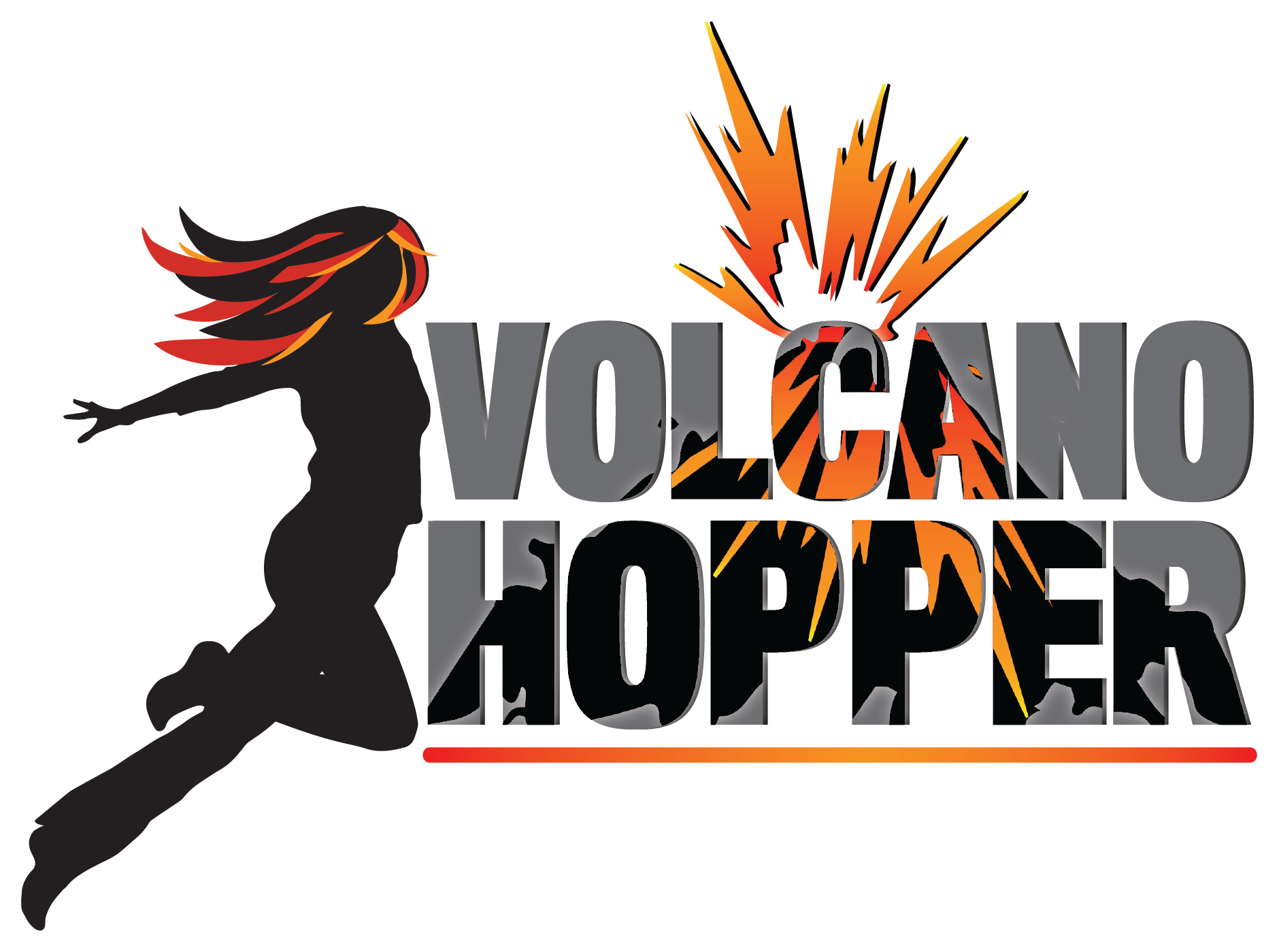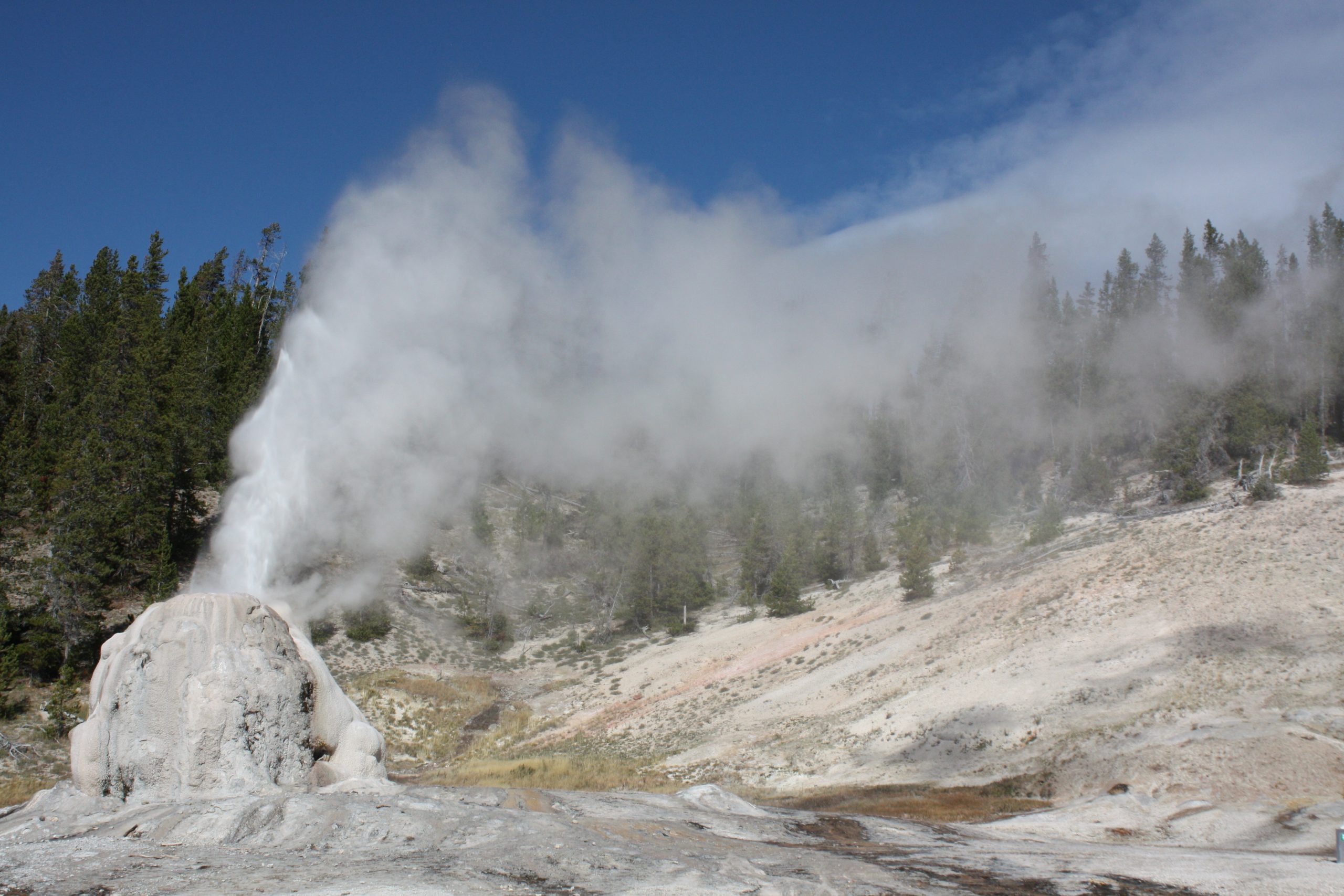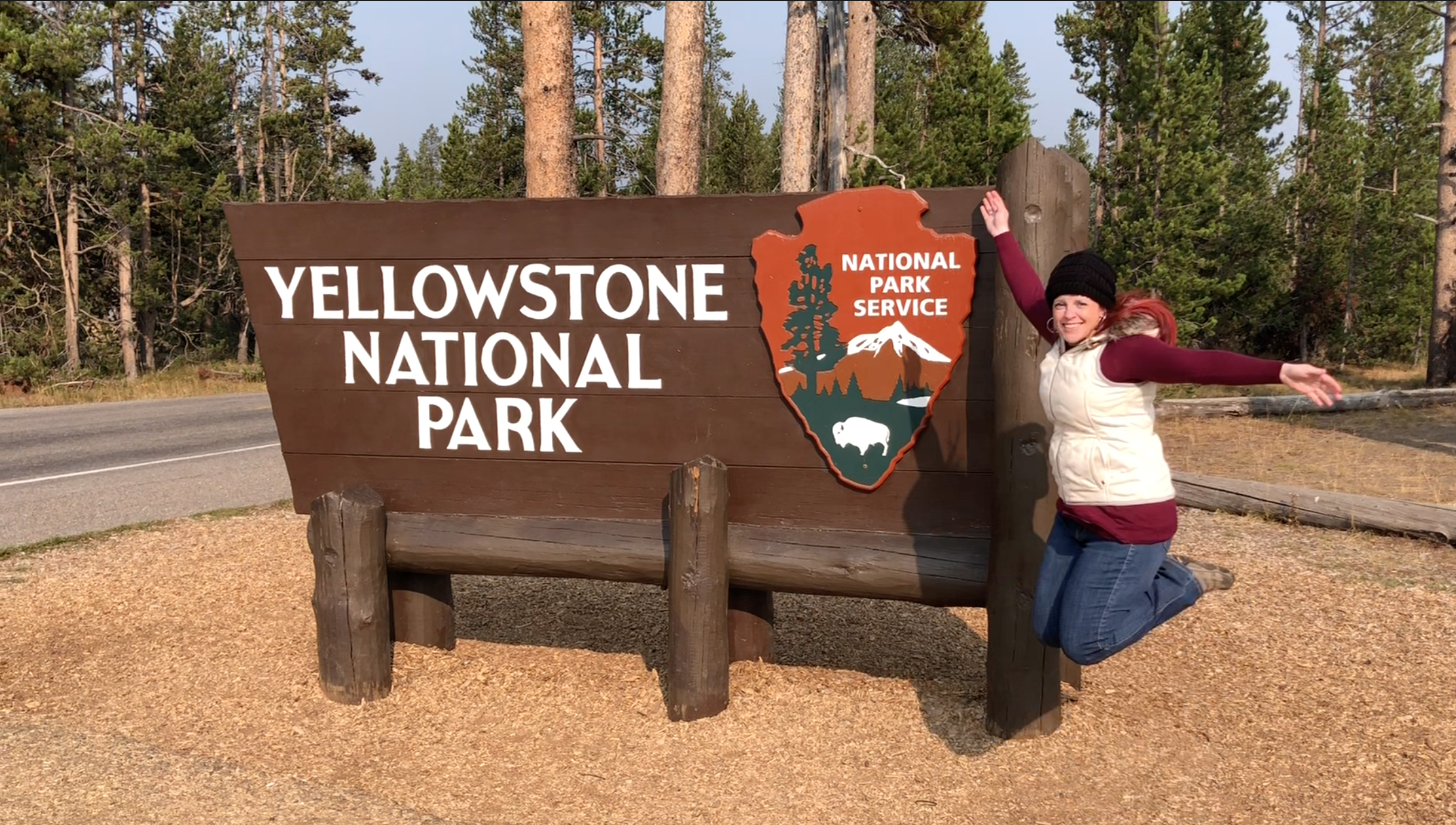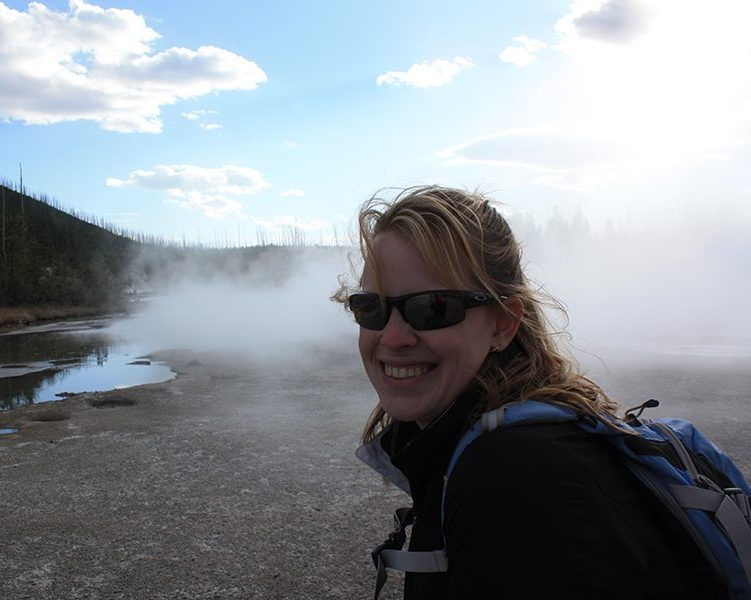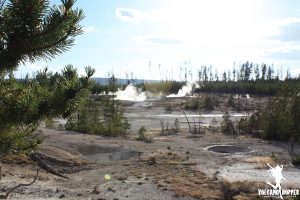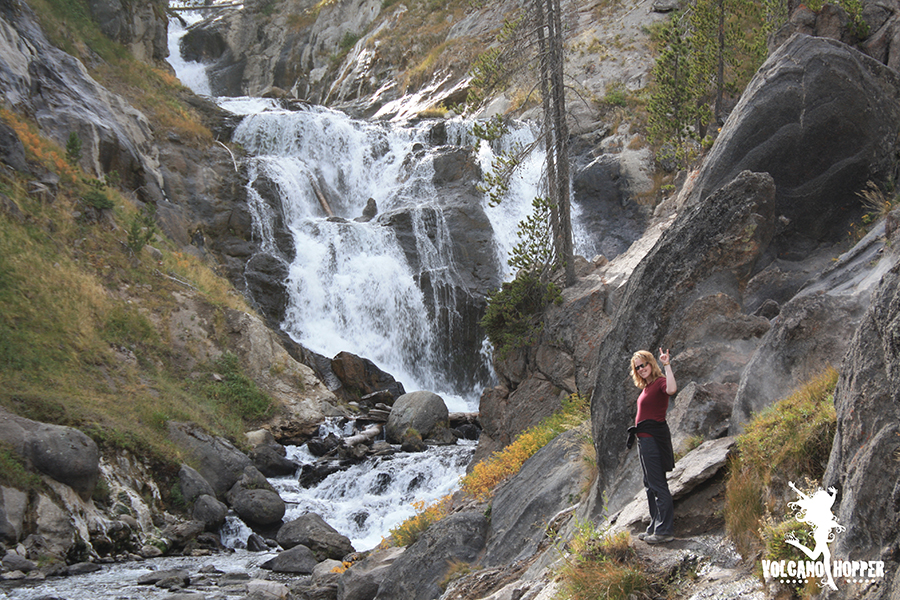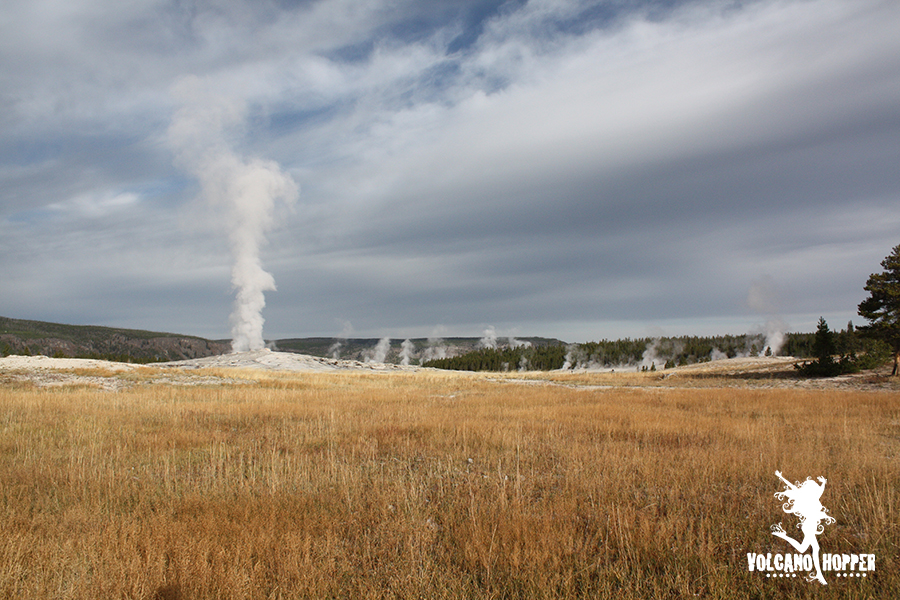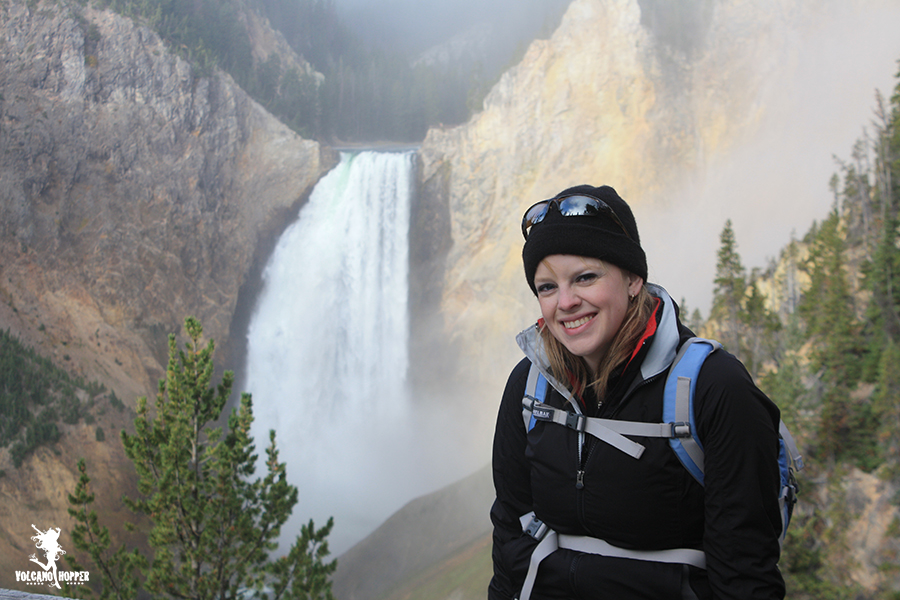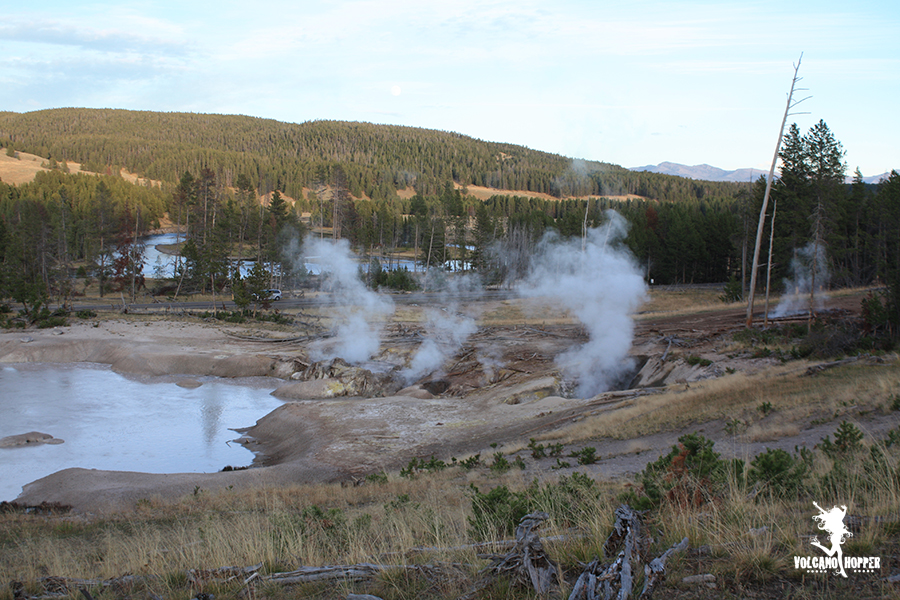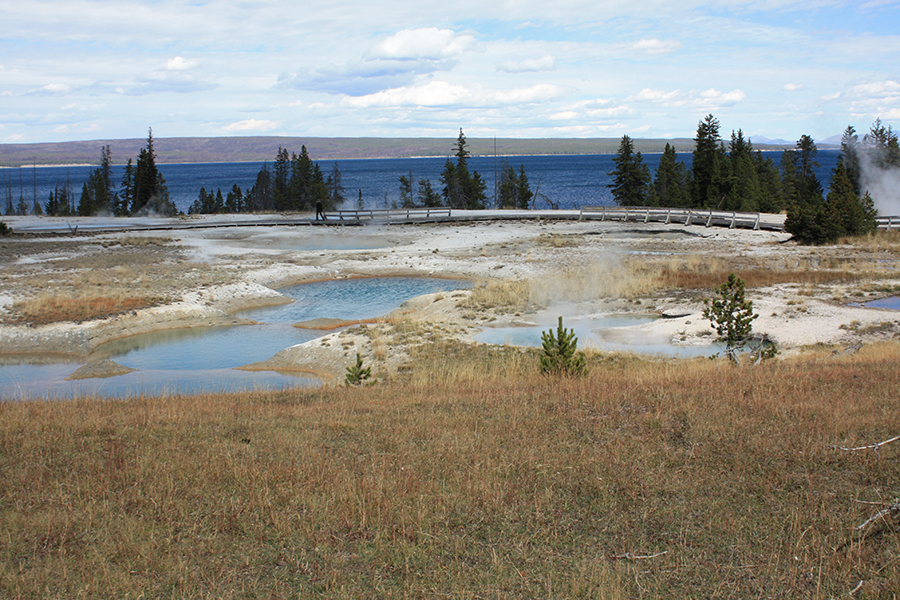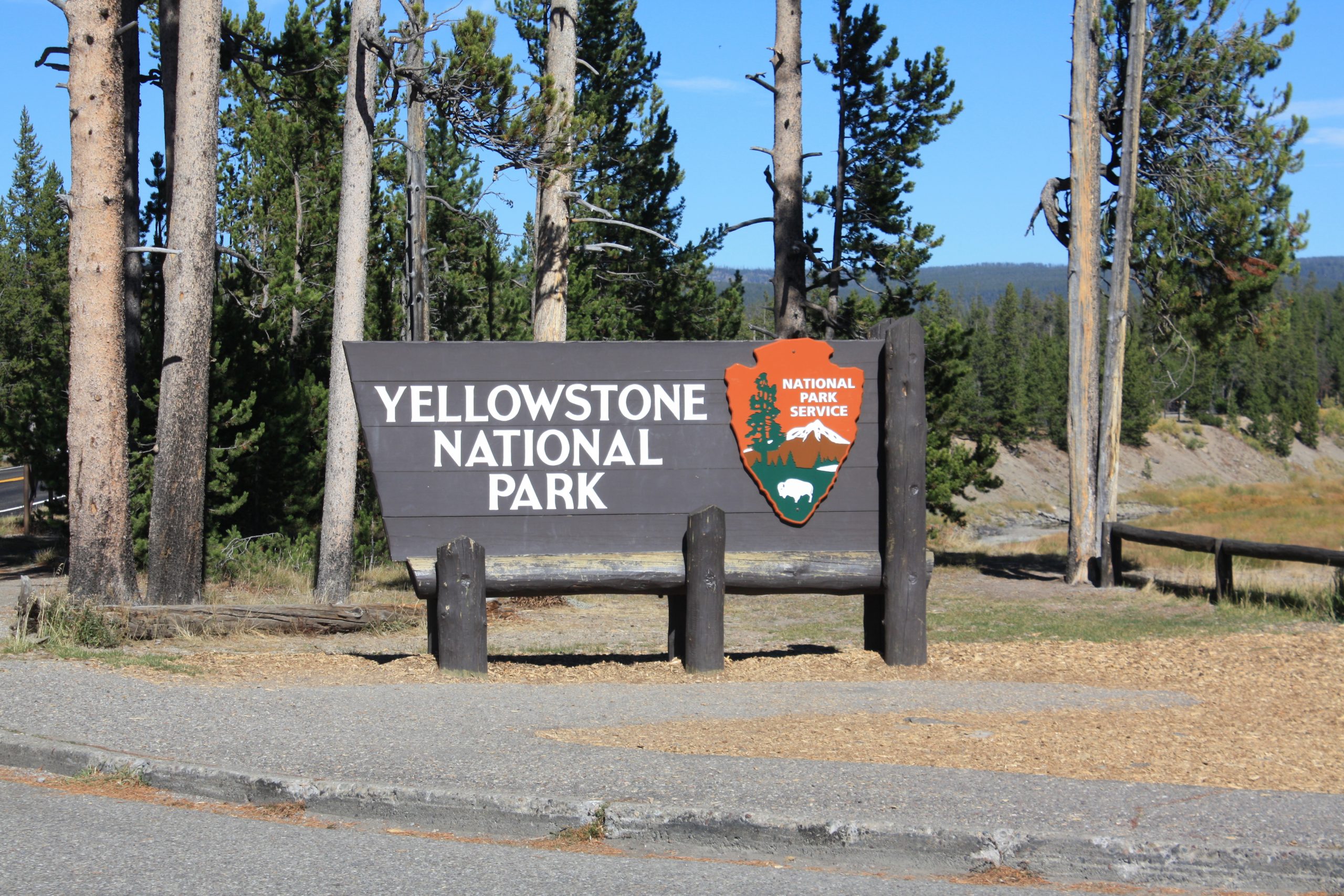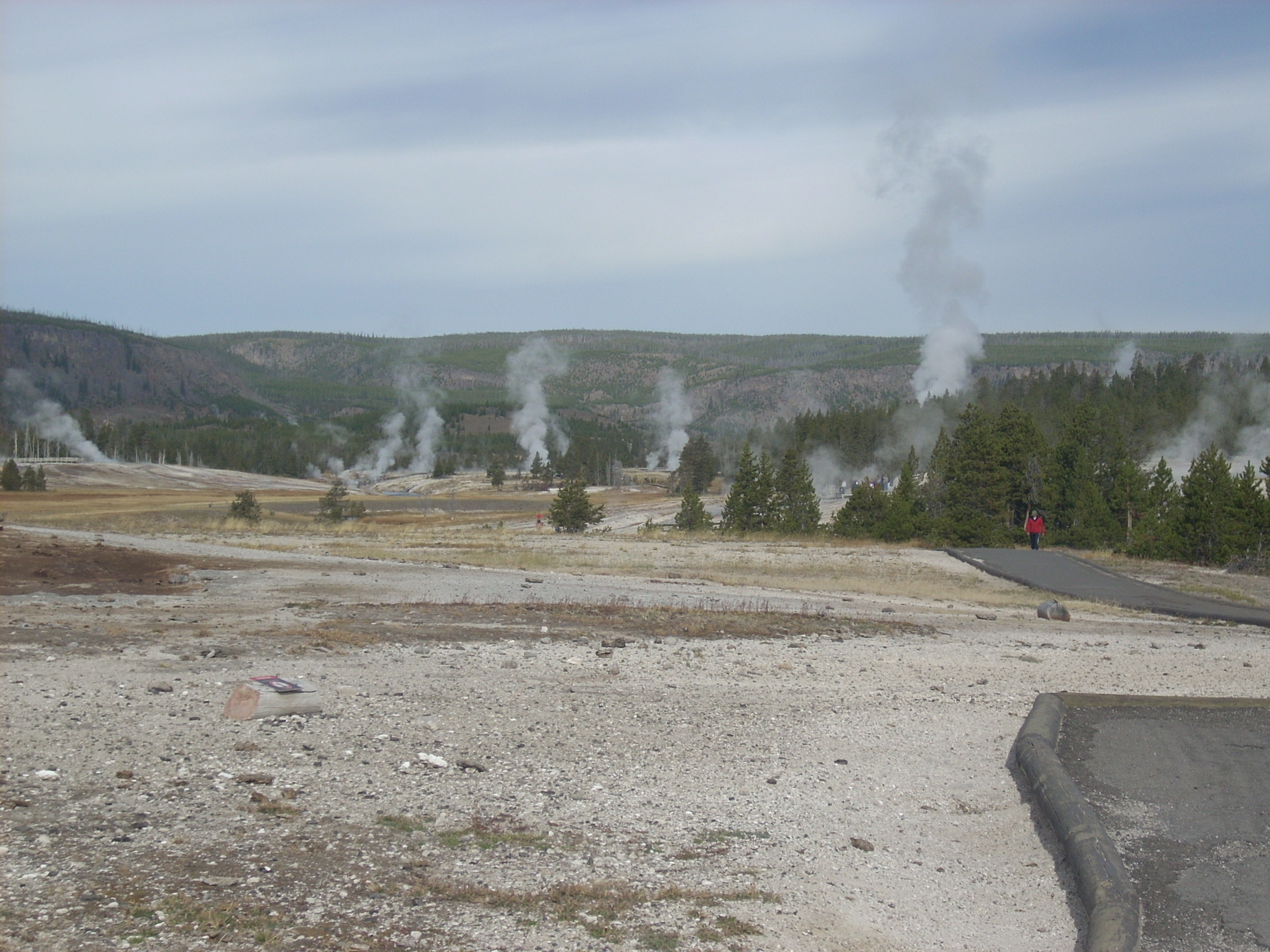Yellowstone: Lone Star Geyser
Lone Star Geyser is a hidden gem just off the beaten path in Yellowstone National Park.
Finding Yellowstone
What springs to mind when you hear the name “Yellowstone?” Here we take a quick look at the history and geology of Yellowstone volcano and the National Park that now sits on top of it.
Yellowstone: Geyser Basins
Vital Stats
Name: Yellowstone
Type: Supervolcano
Eruption Status: Active
Last Eruption: Approximately 640,000 years ago
Location: Black Sand Basin, Biscuit Basin, Midway Geyser Basin, and Lower Geyser Basin
Approx. 44.4600° N, 110.8292° W
Northwestern Wyoming/Southeastern Idaho
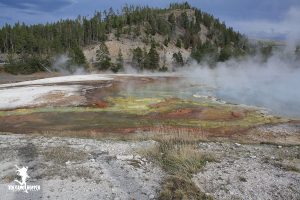
Now that we’ve gotten to see some very impressive geyser action, I’m hooked! I’m stoked to explore the rest of the thermal features in Yellowstone National Park. You too? Well, then, let’s go!
The next stretch of our journey will take us west and north along the southern loop road toward Madison Junction. We will head through four distinct thermal areas: Black Sand Basin, Biscuit Basin, Midway Geyser Basin, and Lower Geyser Basin. Our first stop is only a mile up the road, and I’m ready to explore!
Yellowstone: Upper Geyser Basin
Vital Stats
Name: Yellowstone
Type: Supervolcano
Eruption Status: Active
Last Eruption: Approximately 640,000 years ago
Location: Upper Geyser Basin 44.4600° N, 110.8292° W
Northwestern Wyoming/Southeastern Idaho
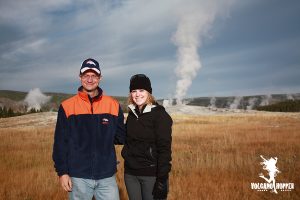
As we head west along the southern loop road, we catch glimpses of wildlife in the thick trees. A mother elk and her calf are grazing on sweet grasses that are clinging to what’s left of autumn. The father, a majestic ten point buck, bounds across the road in front of us and disappears up the hill. As we pass West Thumb Geyser Basin, the trees begin to take on a ghastly appearance. Here you can see the scars of the 1988 forest fires. I was just a kid then, on a cross country trip to Oregon to visit family, but I remember the roiling smoke on the horizon. The fires destroyed 36% of Yellowstone. But forest fires have a natural way of clearing out the old junk and creating space for new life. This is similar to how volcanoes behave. Ash mixes with soil to create fertile land and vibrant life springs forth from it. Now, nearly 30 years later, we can see where life is making her comeback.
Yellowstone: Canyon
Vital Stats
Name: Yellowstone
Type: Supervolcano
Eruption Status: Active
Last Eruption: Approximately 640,000 years ago
Location: N 44 43.178 W 110 28.829
Northwestern Wyoming/Southeastern Idaho
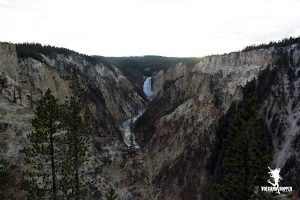
The Grand Canyon of Yellowstone
It’s early. The sun hasn’t even begun to crest the eastern horizon and I’m shimmying into my coat and hiking boots. There’s too much of Yellowstone to explore to stay in bed a moment longer.
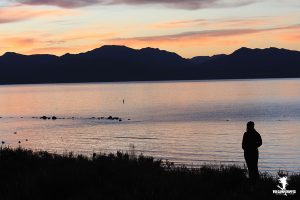
We swing by Yellowstone Lake to watch the sun come up. Brilliant bands of pink and orange streak across the sky and reflect in the deep water. Snow glints off of the peaks in the Absaroka Mountains just on the other side of the sprawling lake. A great horned owl hoots as it perches on a sign nearby. A young male elk tromps through the woods, scraping his horns against a tree trunk before disappearing in the brush at the top of the hill.
Yellowstone: Mud Volcano, Sulphur Caldron & Hayden Valley
Vital Stats
Name: Yellowstone
Type: Supervolcano
Eruption Status: Active
Last Eruption: Approximately 640,000 years ago
Location: 44.4280° N, 110.5885° W
Northwestern Wyoming/Southeastern Idaho
We continued our journey north from Yellowstone Lake along the Southern Loop Road. The Yellowstone River runs adjacent to the road and here you can find some great fishing spots. LeHardys Rapids is one of them. In the summer months, you can watch the cutthroat trout doing acrobatics as they leap up over these rapids in seach of their upstream spawning grounds. Keep on going through the heavy forest and you’ll come to a section of the park that really stinks.
You get out of your car at a place called Mud Volcano. Whewie! I wasn’t kidding, was I? The place smells quite a bit like you left some eggs out on the porch to rot for a month. But the smell should tip you off to some pretty fascinating volcanic features. So let’s go take a look around.
Yellowstone National Park: South Entrance & West Thumb Geyser Basin
Vital Stats
Name: Yellowstone
Type: Supervolcano
Eruption Status: Active
Last Eruption: Approximately 640,000 years ago
Location: 44.4280° N, 110.5885° W
Northwestern Wyoming/Southeastern Idaho
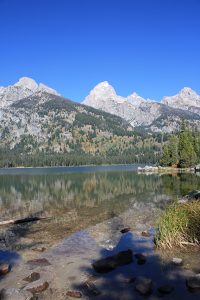
It was a long drive to Yellowstone through a lot of flat and rather uninteresting prairie, but we made it. The late afternoon sun was pouring down onto the golden autumn leaves and making the creek sparkle. Instead of heading directly into Yellowstone, my partner in crime and I took a detour south toward Jackson. We stopped at a few places along the Grand Tetons and did a little hiking at Taggart Lake to stretch our legs. These mountains are not volcanic, but they certainly are magnificent. Bathed in the rich colors of fall, they were a sight not to be missed. While you’re in the area, make sure you stop and take a look. You won’t be disappointed.
And of course, if you’re hankering for some pretty darn delicious food, don’t miss the Gun Barrel restaurant down in Jackson and take a bite of their bison prime rib. Yum. Just… yum.
Exploring Yellowstone
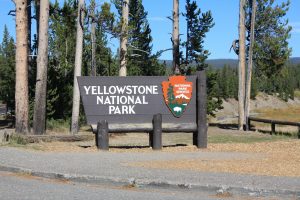
Sit back and close your eyes for a moment. What comes to your imagination when I say “Yellowstone?” Do you see a national park full of sweeping forests and gushing rivers? Vast herds of buffalo grazing on the sweet grasses and bears romping through the hills? Are you imagining the white spray of a geyser as it shoots water over a hundred feet into a crystal blue sky? And do you imagine the throbbing pulse of a volcano just beneath your feet as you stand in the heart of the park?
Sometimes that last one catches people off guard. Many people who visit Yellowstone each year have no idea that they’re visiting an active volcano. But it is the volcano that creates such a fascinating and other-worldly terrain out of what would be just another mountain range. In fact, the area is so unique and unusual that no one believed the “frontier fiction” that returning fur traders in the 1700’s were spinning. It was made a national park in 1872 to protect such incredible features.
The Day Yellowstone Erupted…
I promised you in the last post that we’d get to look at what would happen if Yellowstone Volcano really did erupt. Not necessarily a fun thing to imagine, and let’s hope it never does happen. So, sit back with a warm drink and let’s imagine what would happen if Yellowstone Volcano did decide to erupt with full force. Here we go…

It’s official. It’s gonna be a bad Monday.
News nowadays usually travels faster than you can blink. Too bad some things travel just slightly faster.
It’s the middle of July and I look out my office window to see dark clouds pouring over the Colorado mountains. Flakes of snow are raining down. Huge flakes that blanket everything. And they are a mucky gray.
